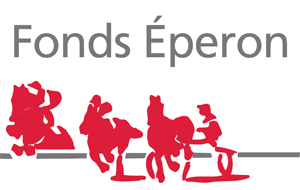Poitevin
.JPG) A little background...
A little background...
Usually classed as a mule mare, the Poitevin draught is the result of several centuries of harsh selection from the population of horses bred freely in the marshlands of the west Atlantic region of France and the Flemish Draughts which accompanied the Dutch engineers who came to develop the Marais Poitevin in 1599 at the request of King Henry IV of France.
It was used until just after the second world war to economically produce (through the unnatural union of the Poitevin Draught mare with the Baudet du Poitou) a large mule, the Poitevin Mule, reputed the world over.
Standard and breeding area
Easily recognisable from its long lines, the Poitevin draught mule mare has a long neck with a thick mane and powerful legs with thick and abundant feathering on the bottom half. It measures 1.60 to 1.70m with an average weight of 750kg for the males. Its coat, of varied colours, can be grey, black, bay or dun. Its breeding area extends throughout the Vendée, to Deux-Sèvres and Vienne, to the north of Charente Maritime and the north-west of Charente.
Today...
In the early 90s, the livestock was at its lowest: 75 pure bred covered mares gave birth to 39 foals. A safeguard plan was therefore implemented: as of Spring 2000, and in application of the breeding law of 1966, the Breeders’ Association was transformed into the Unité de Sélection et de Promotion des Races (Breed Selection and Promotion Unit) (UPRa), which for the first time brought together all of those concerned for the future of this breed: breeders, approved bodies responsible for the production of semen, users and CREGENE (Conservatory of genetic resources for the central west Atlantic region of France). Today, even though it still happens that mares are covered from the age of two by Baudets for their first gestation, for purposes of conservation it is more common for them to be put forward for reproduction at the age of three to be covered by a horse. These very rustic animals are often raised entirely outside. They are little affected by bad weather. In 2008, 40 stallions were active, 219 mares were covered by a Poitevin draught and 69 by a Baudet du Poitou to produce mules.

 Contact
Contact

